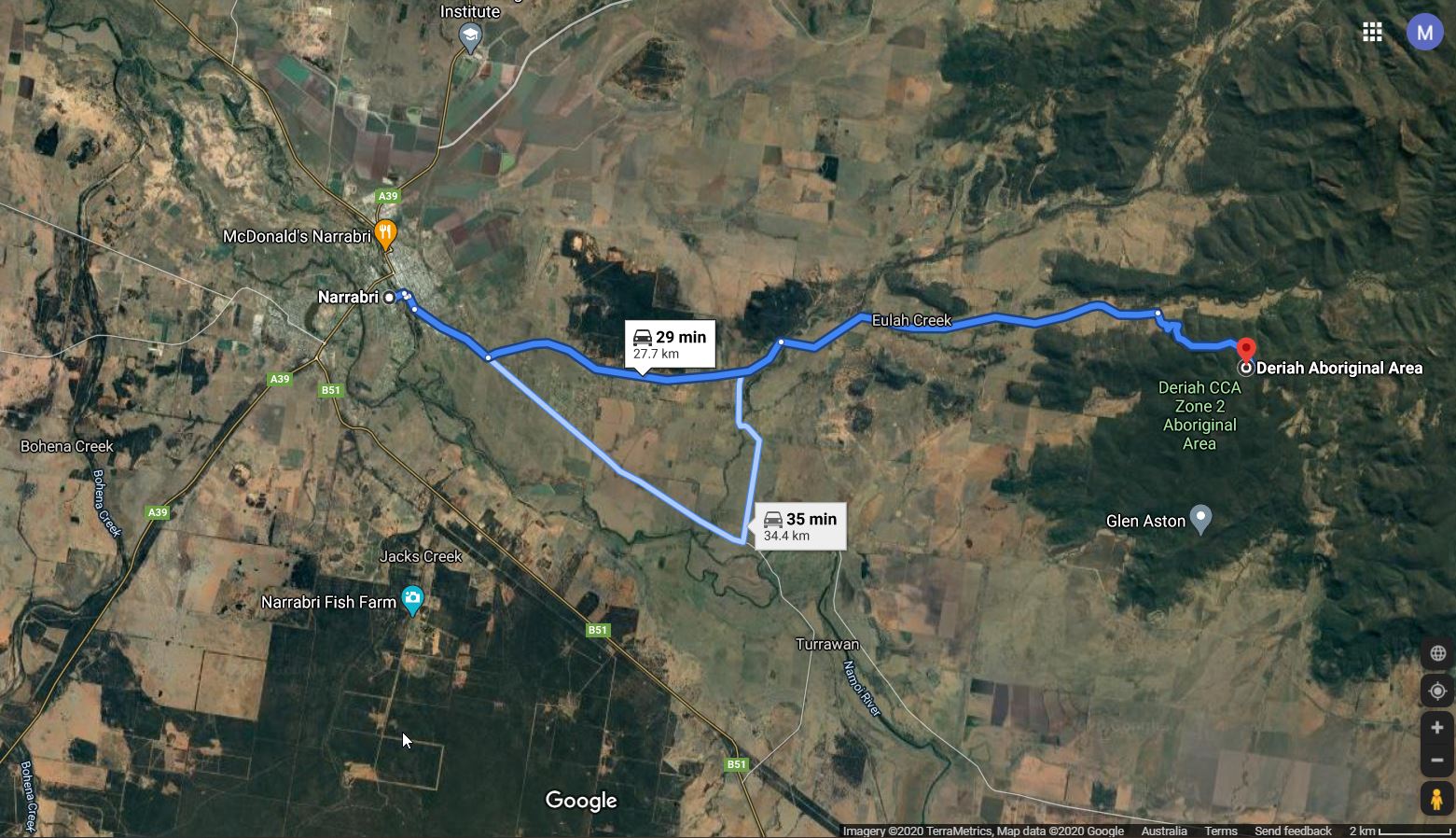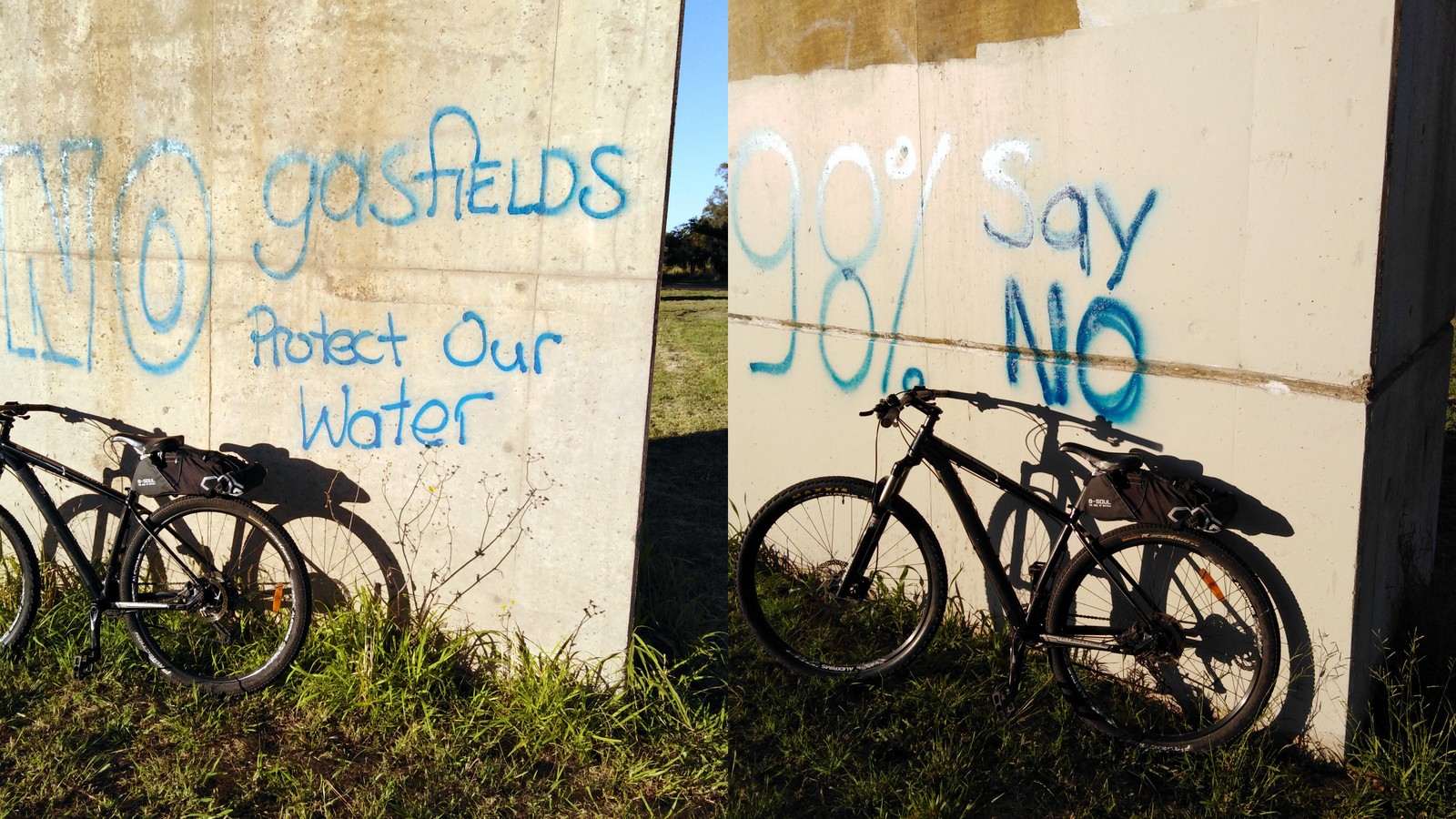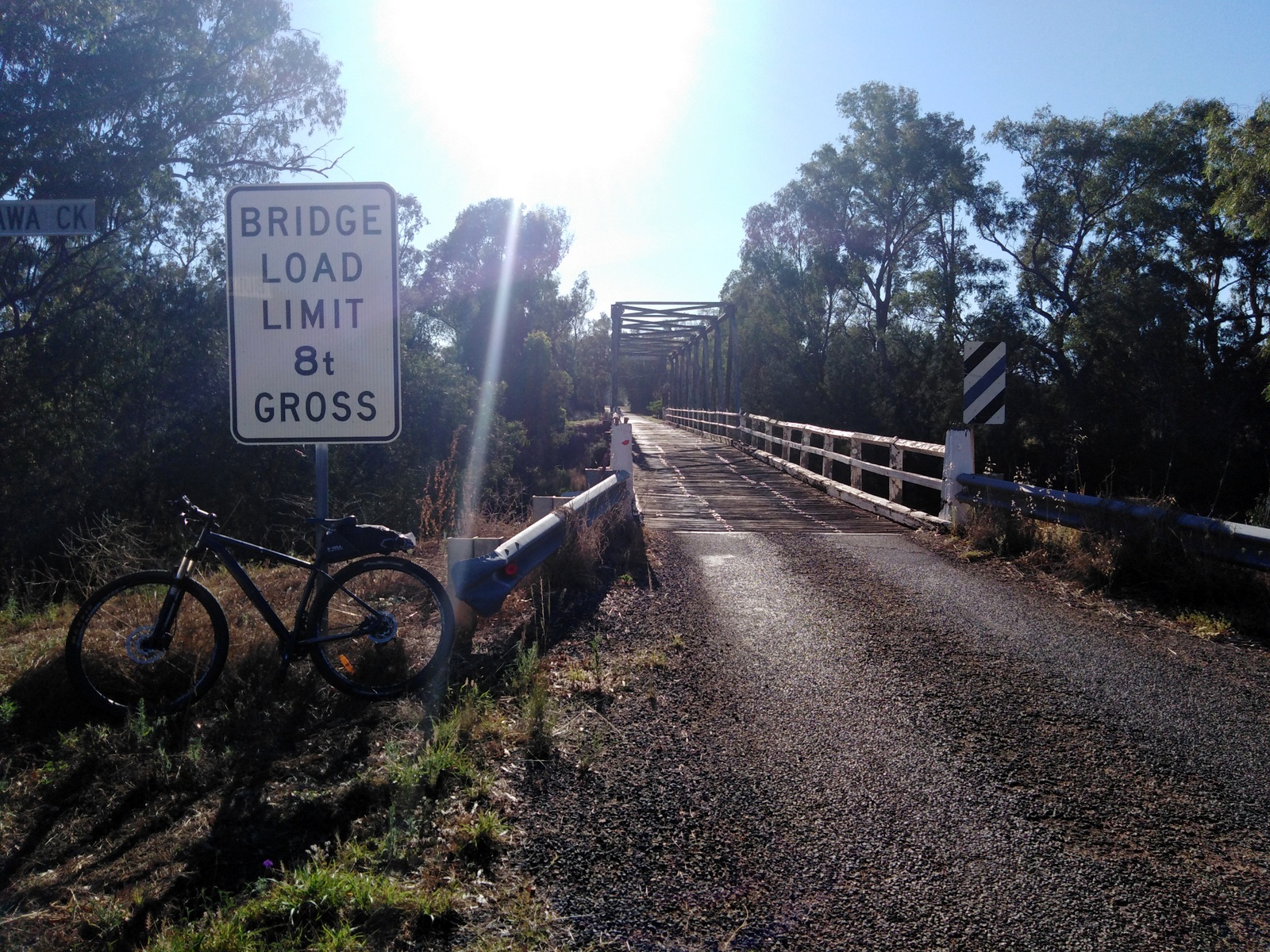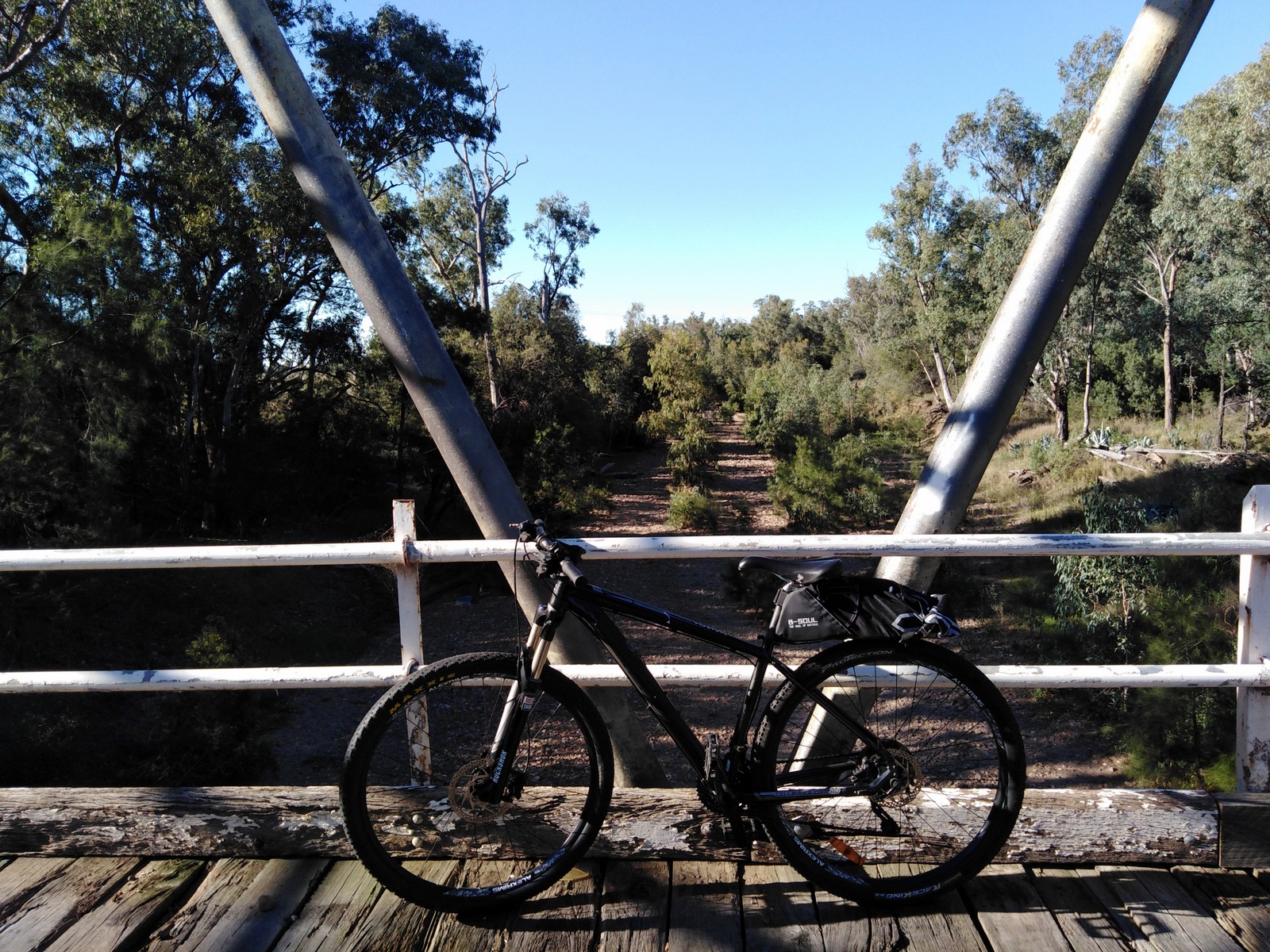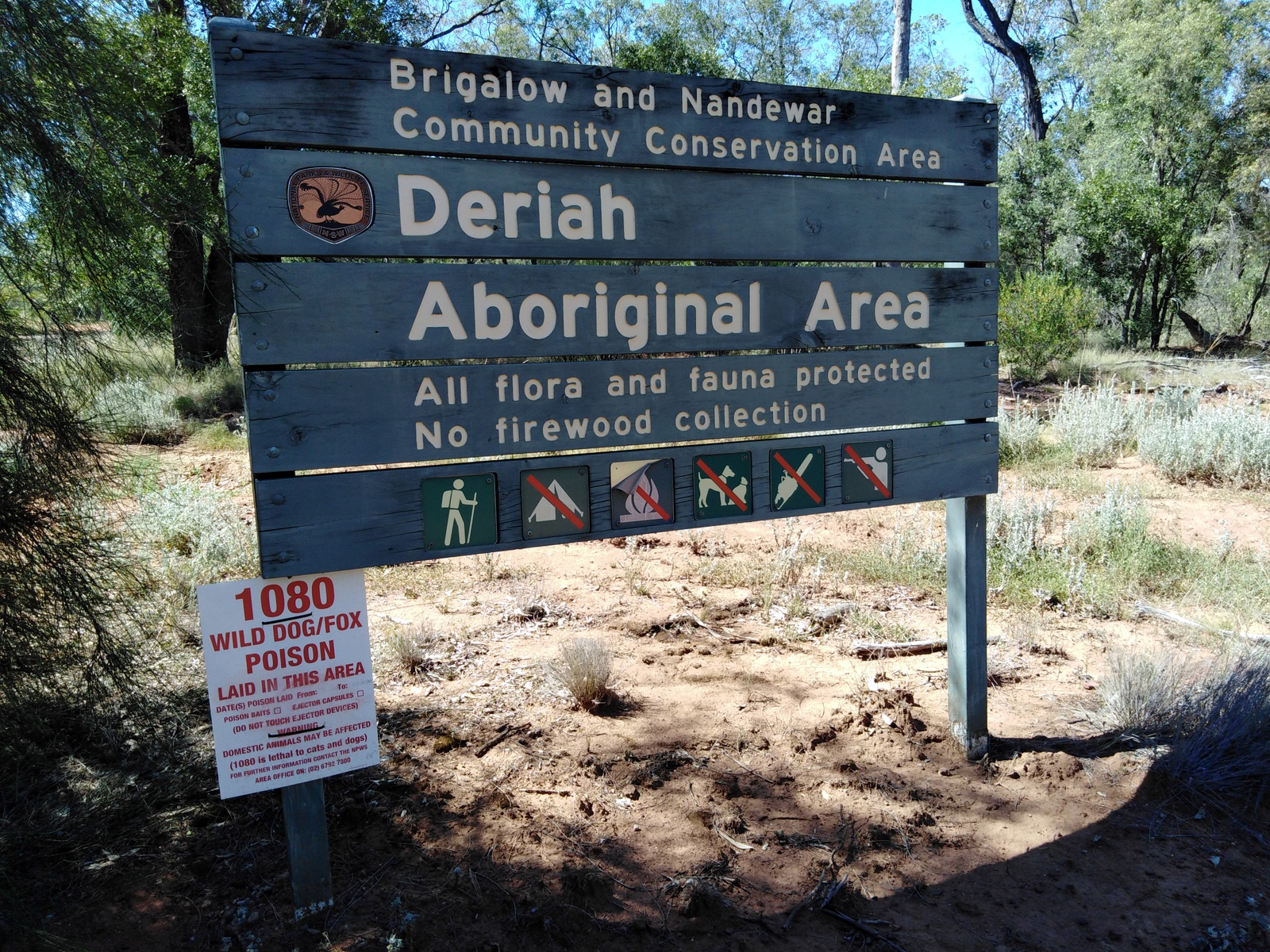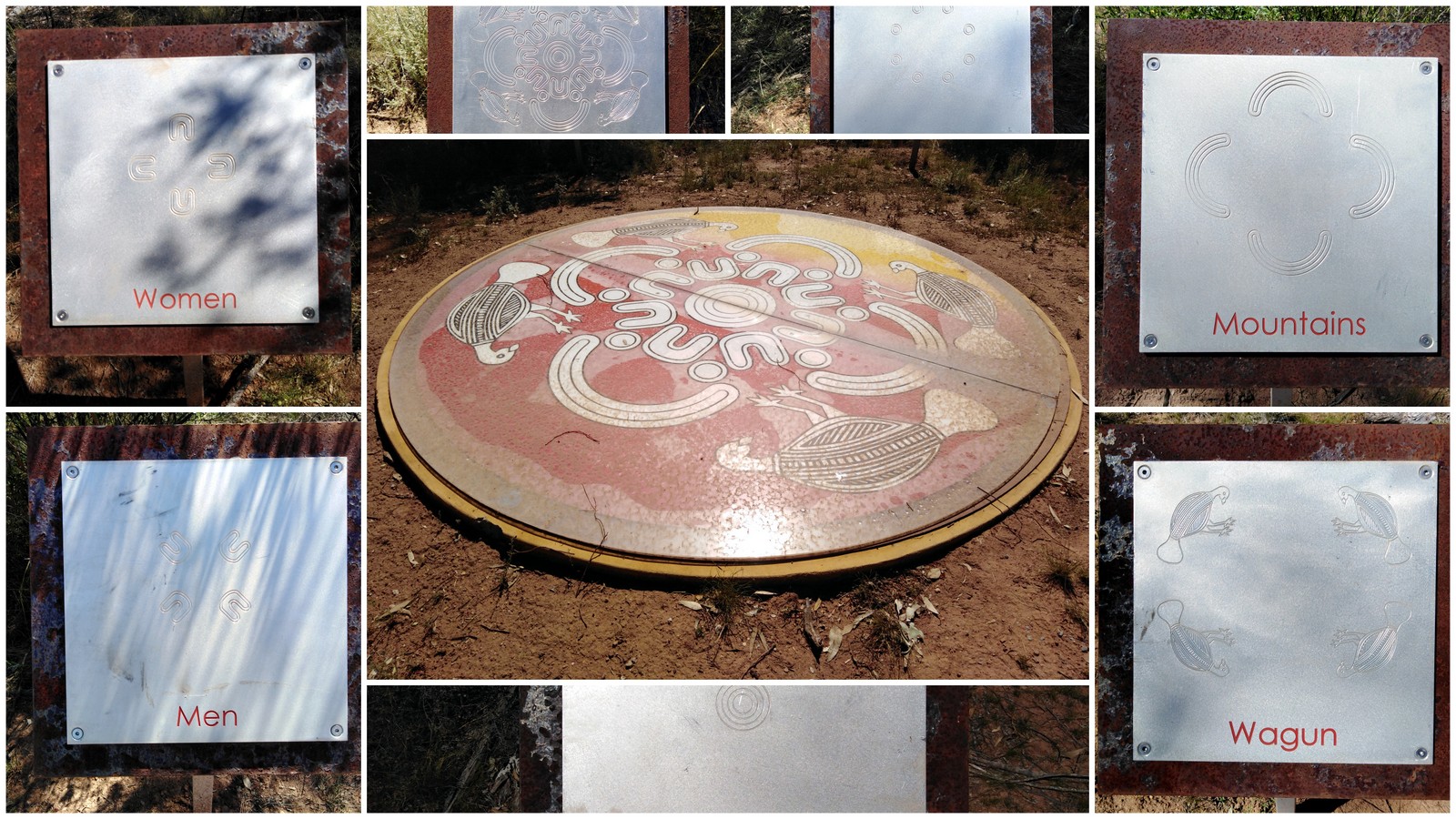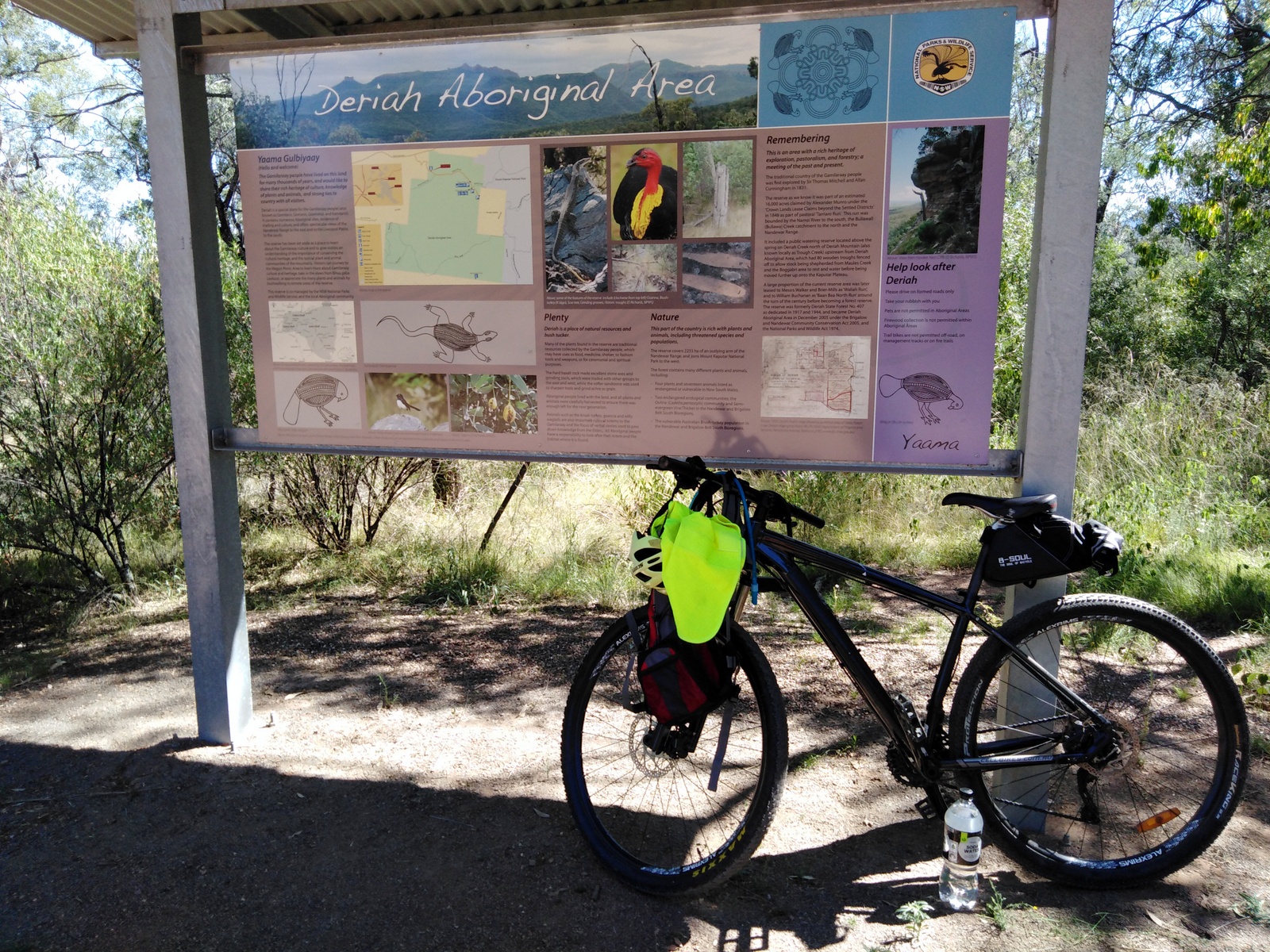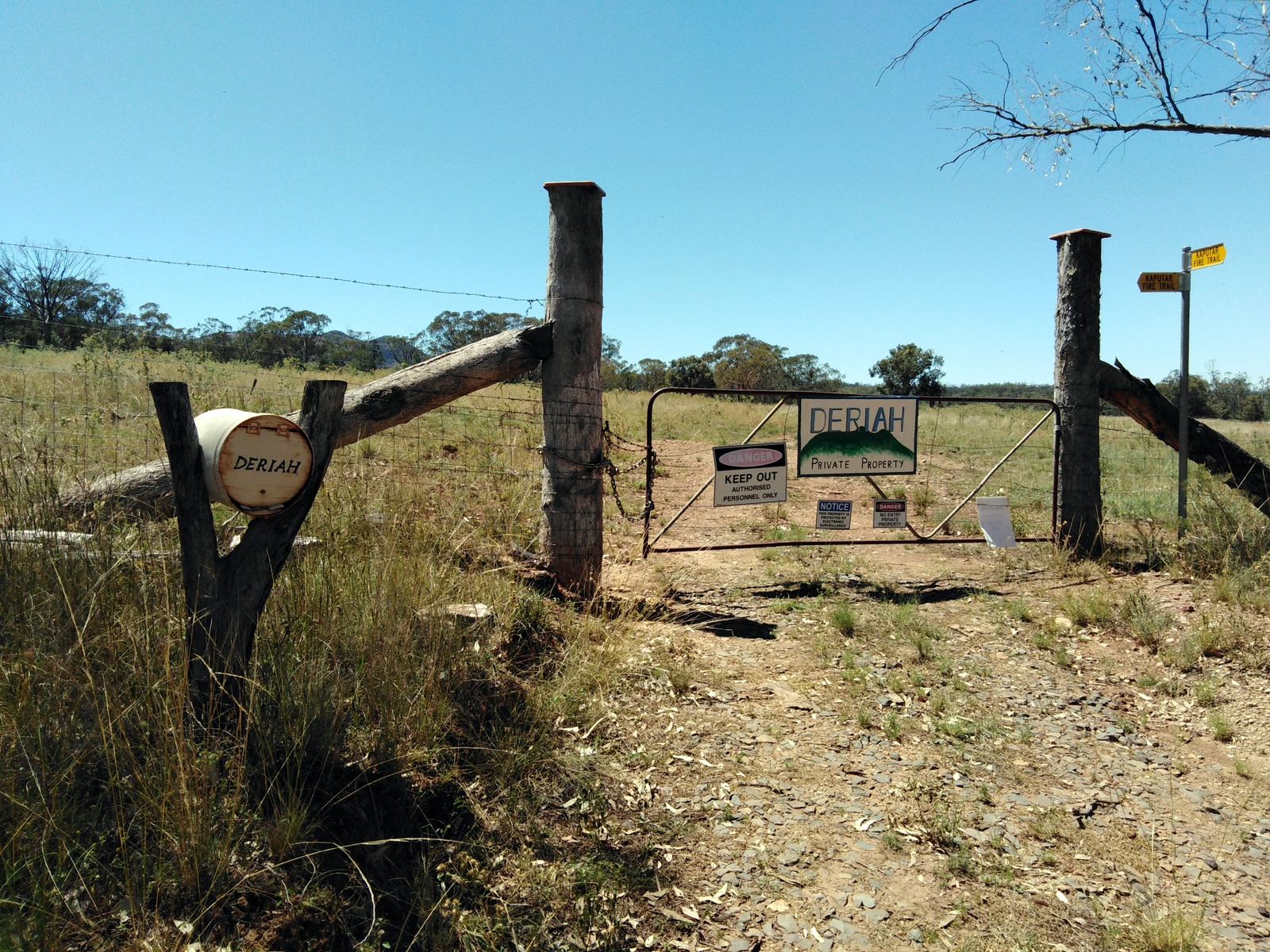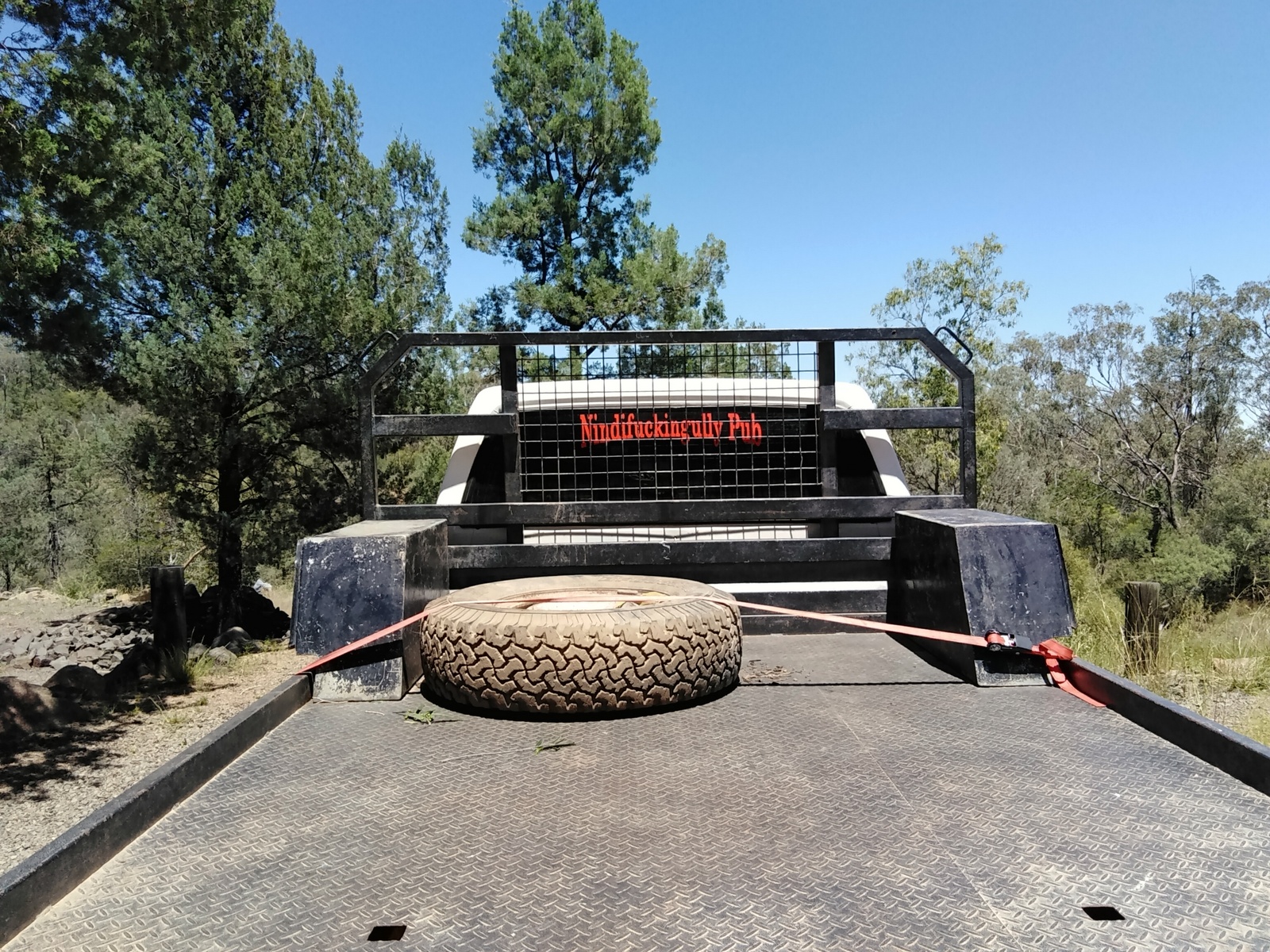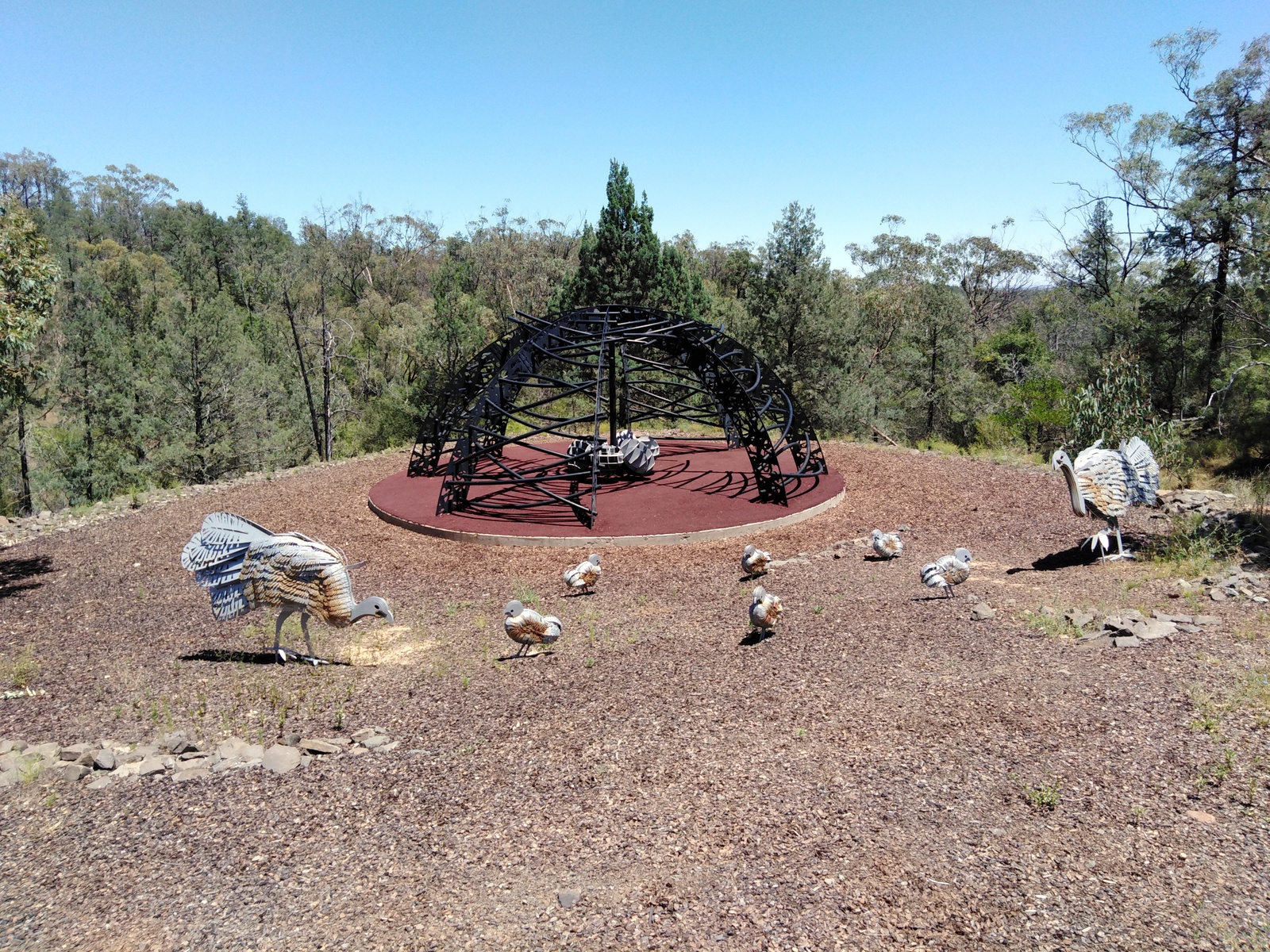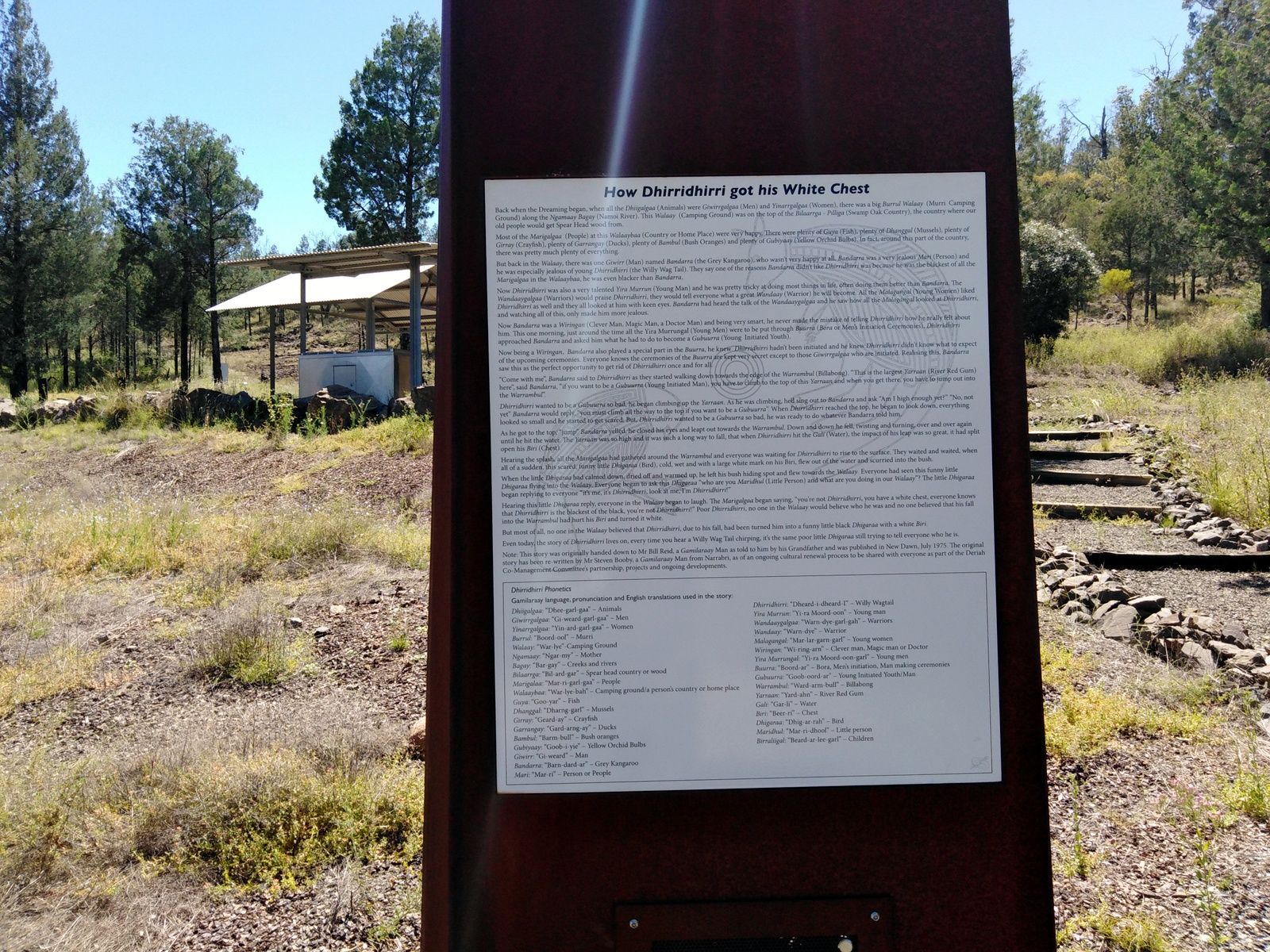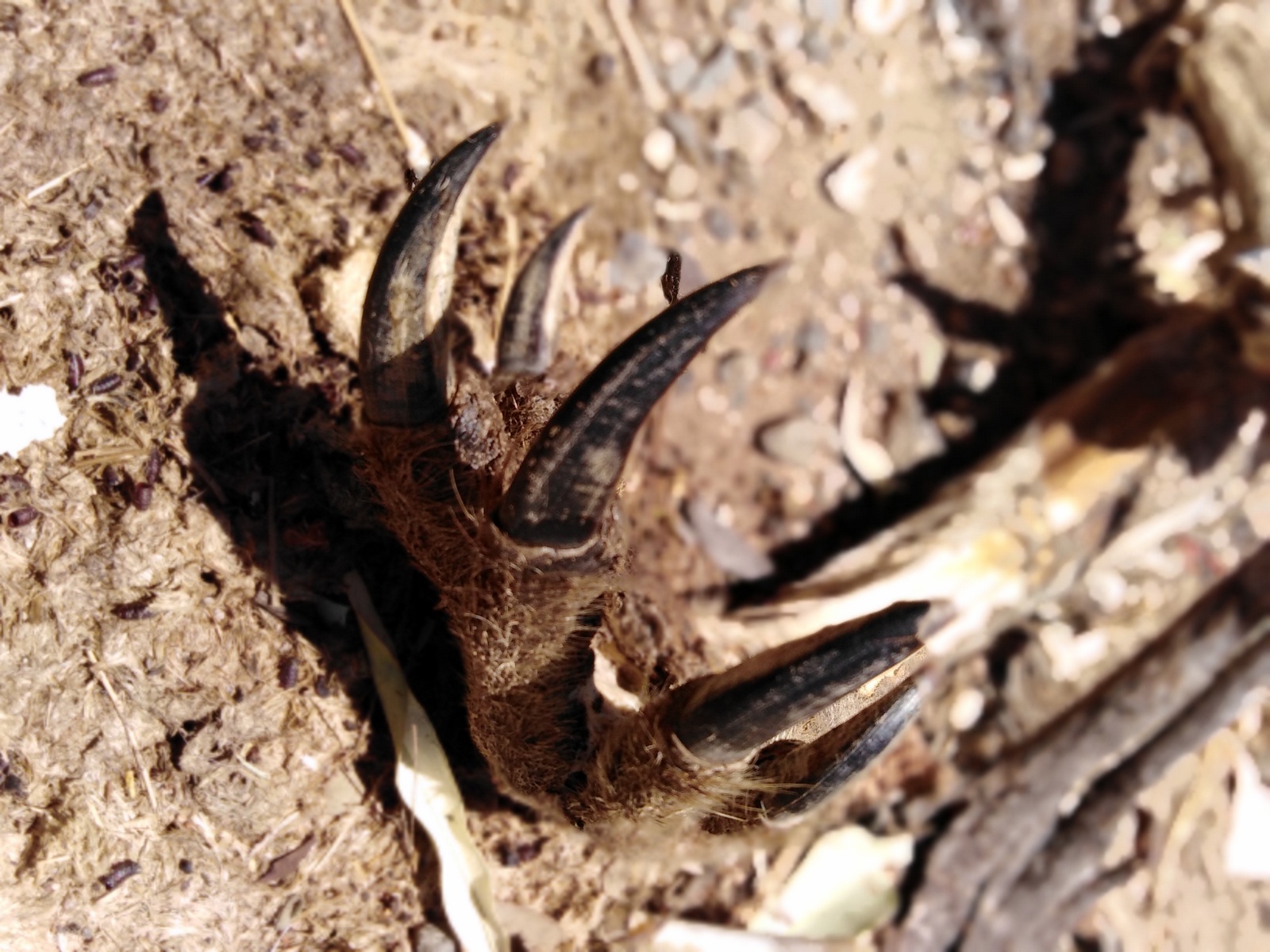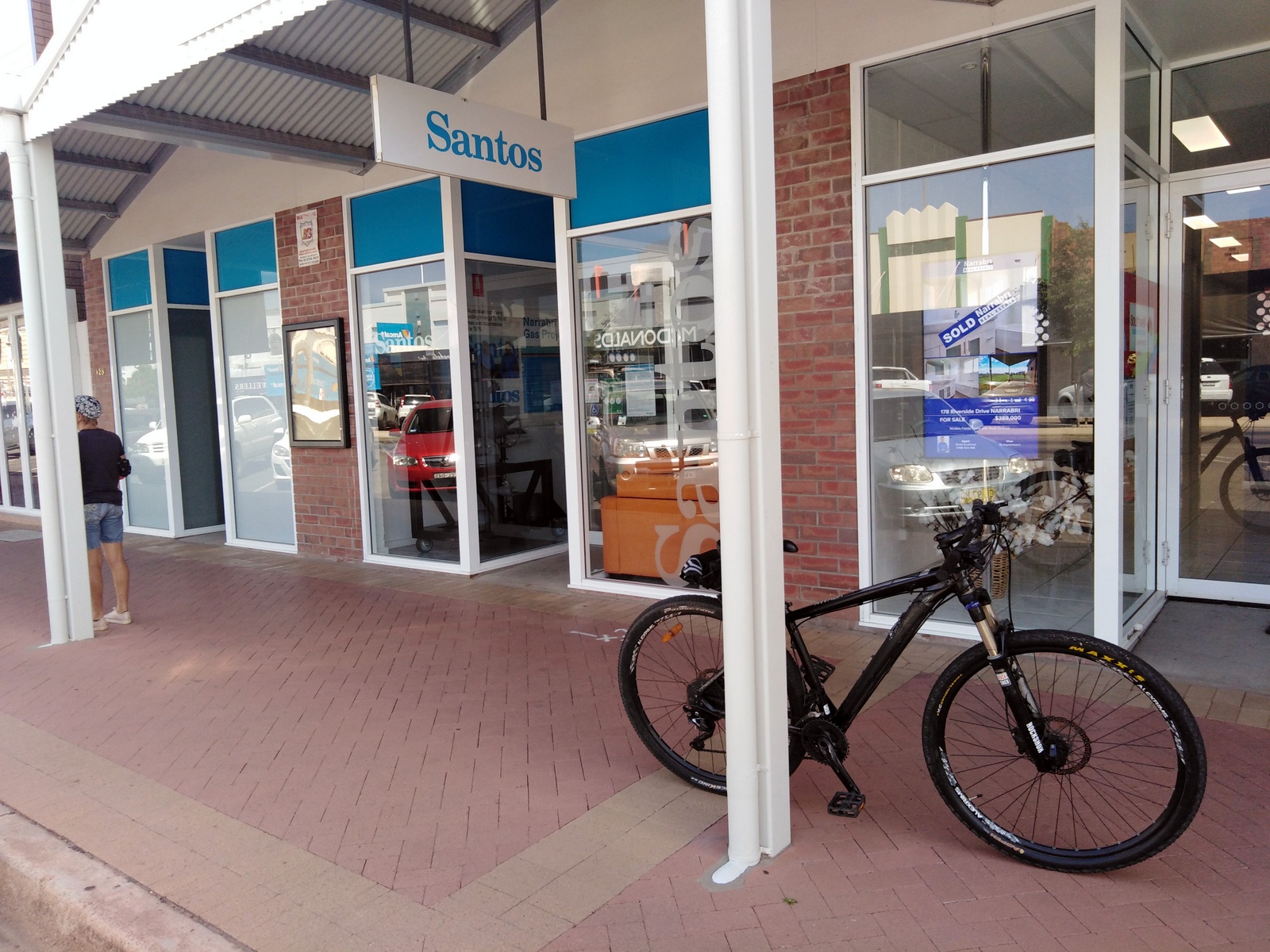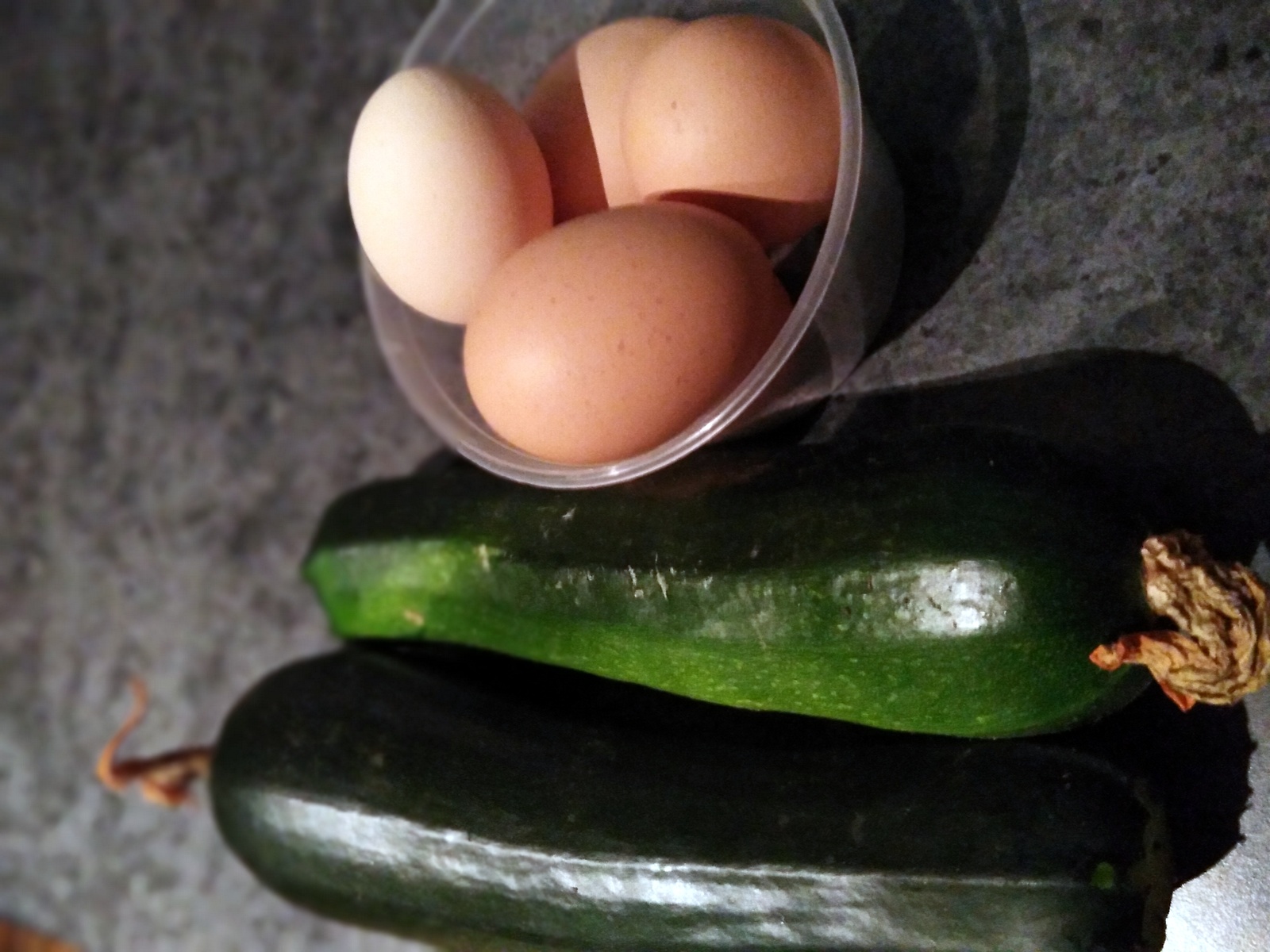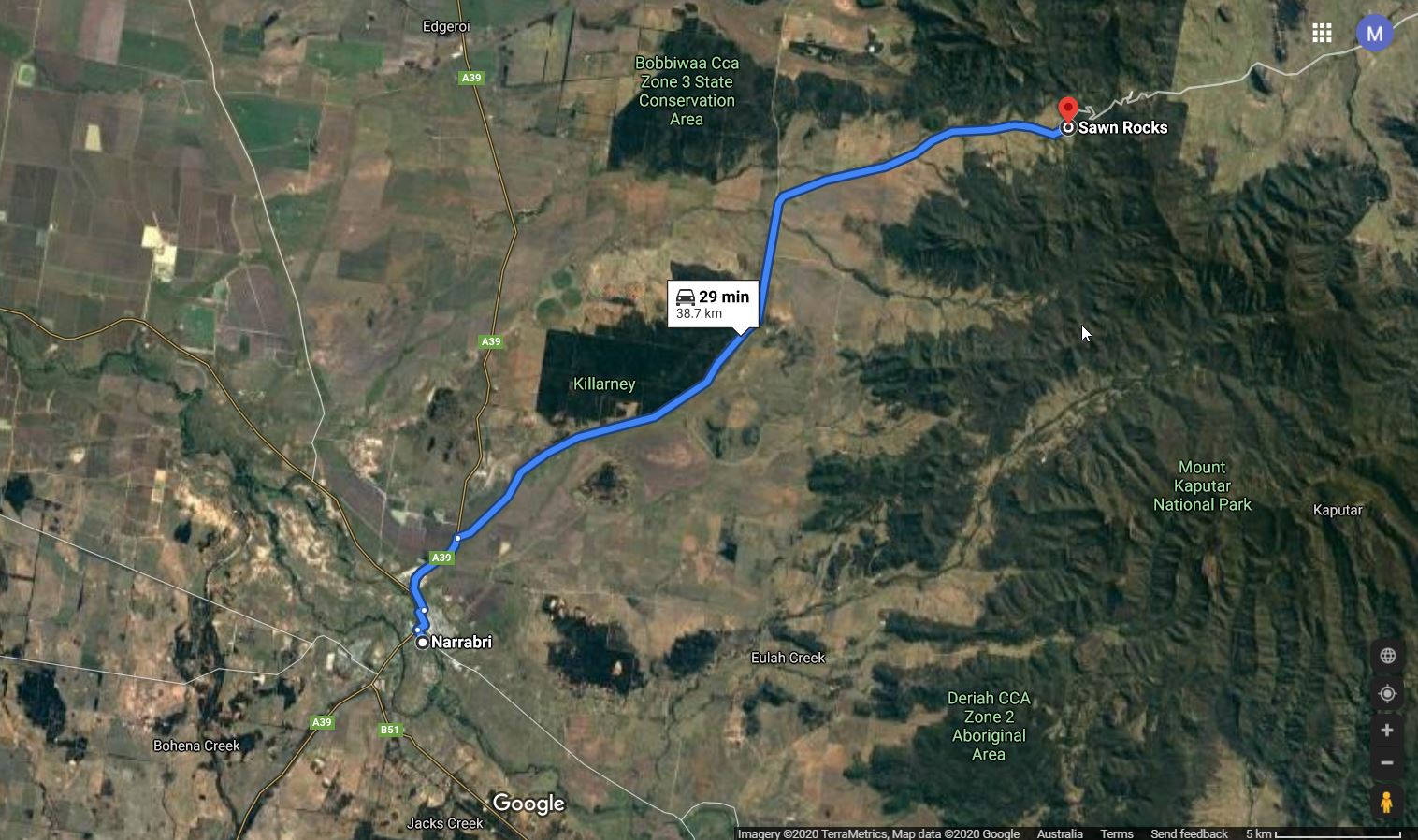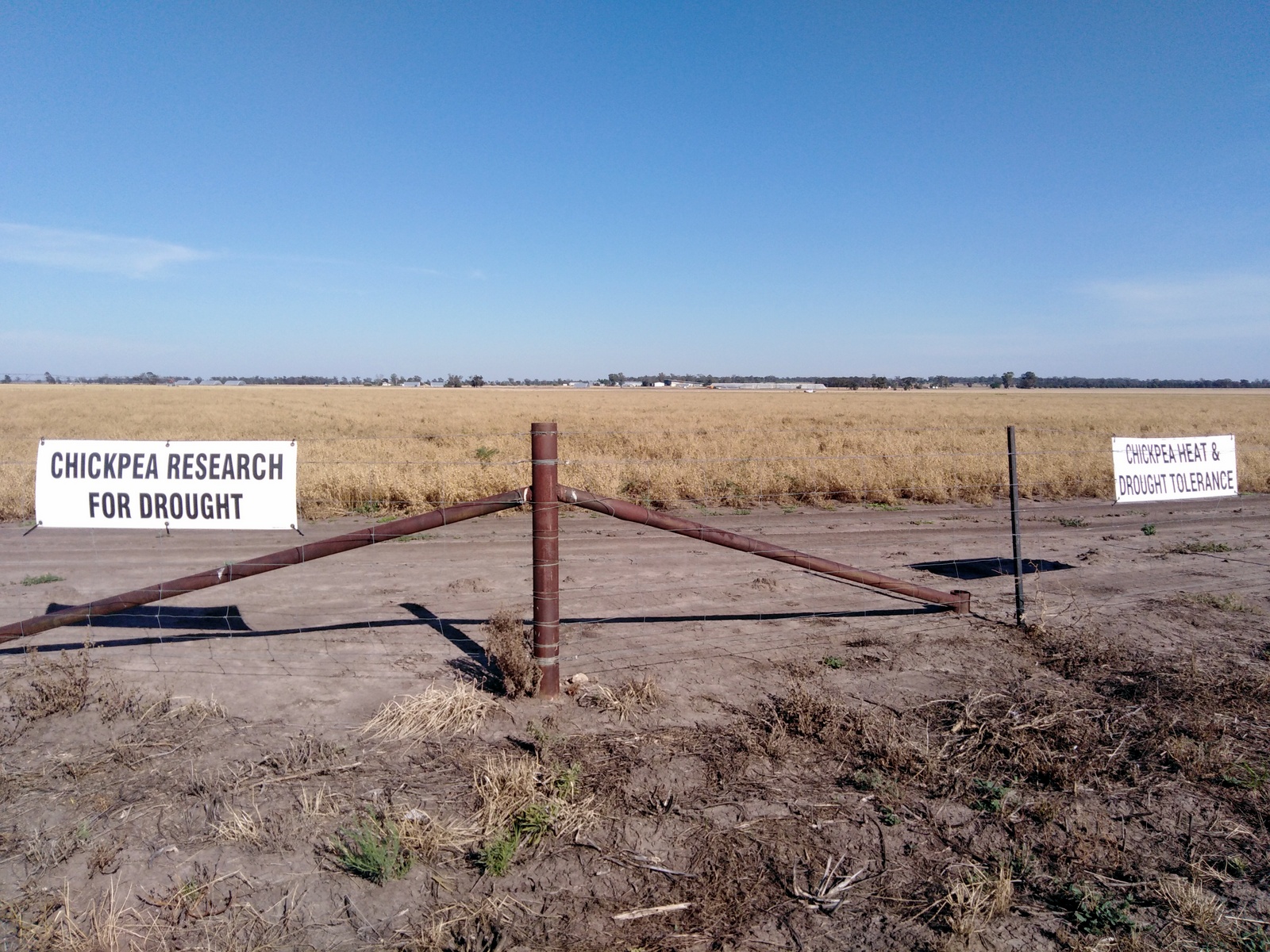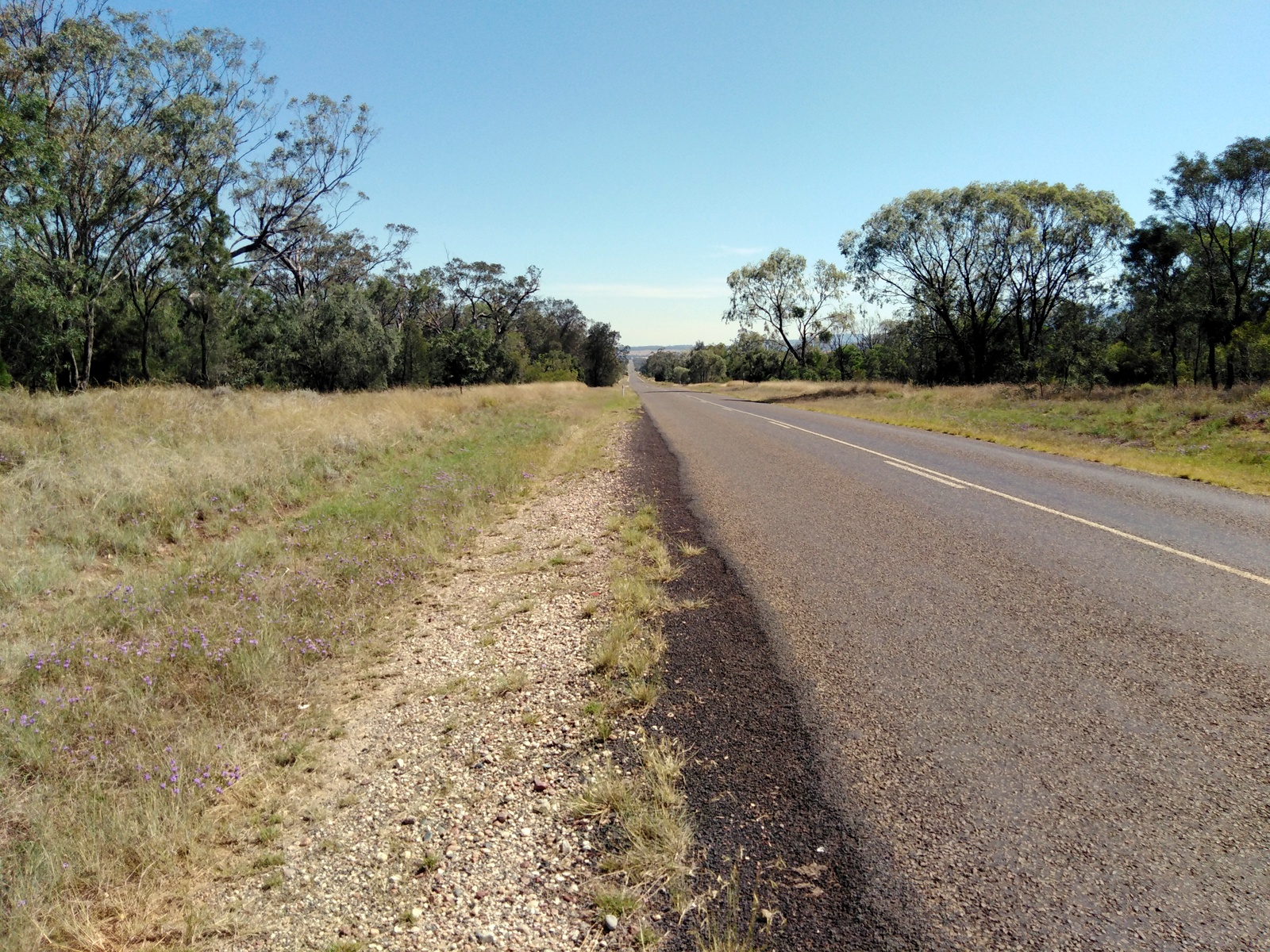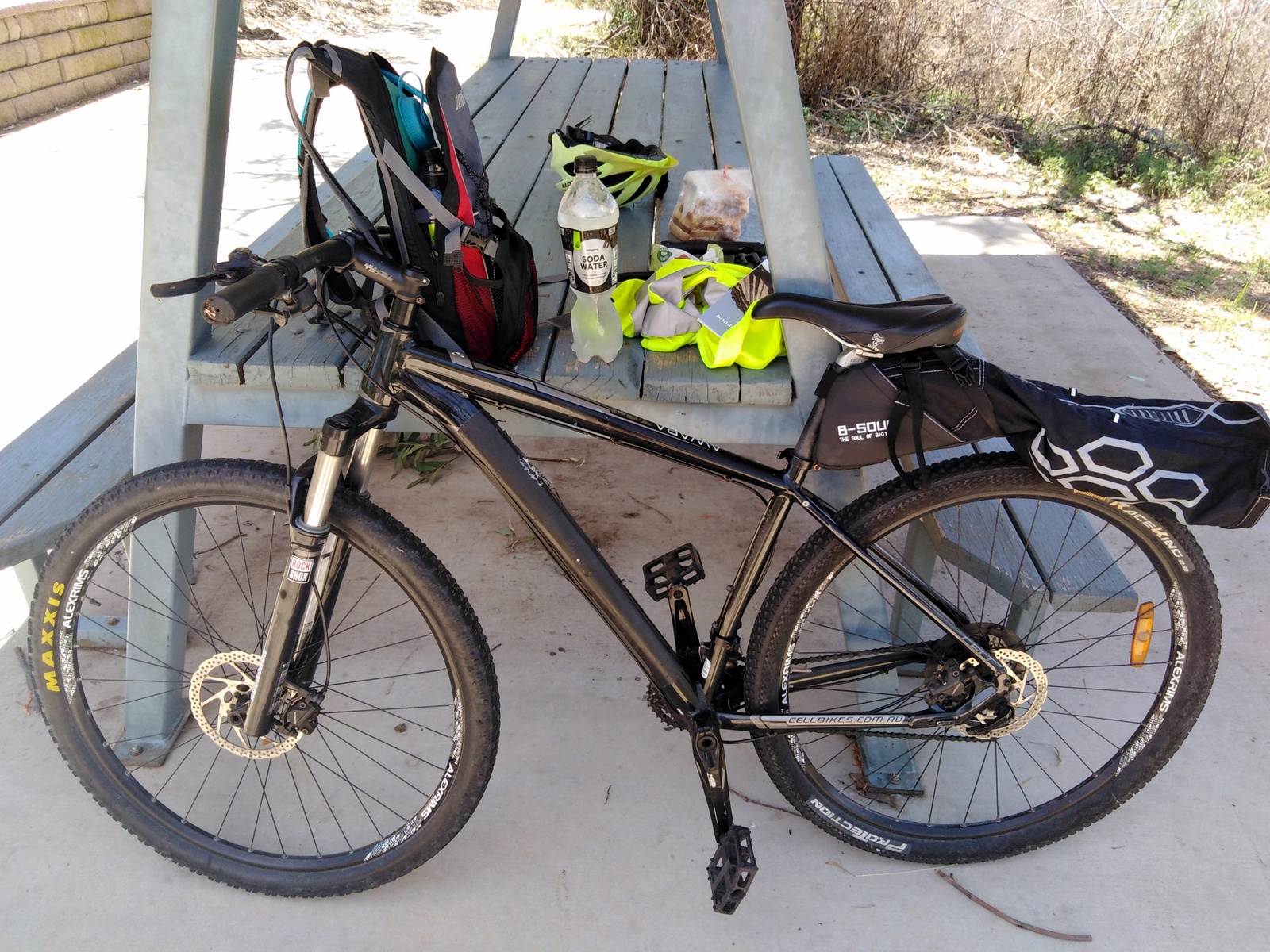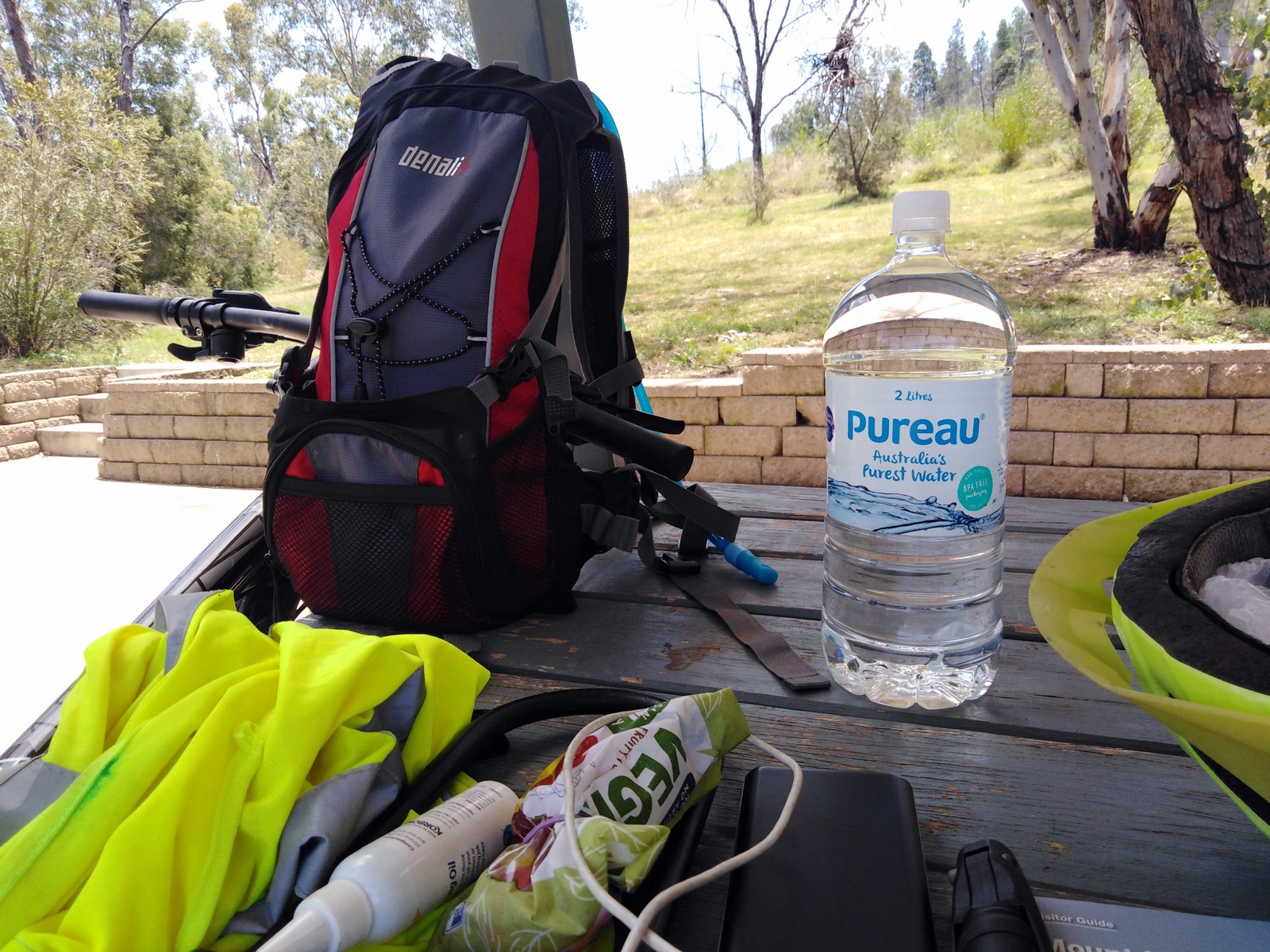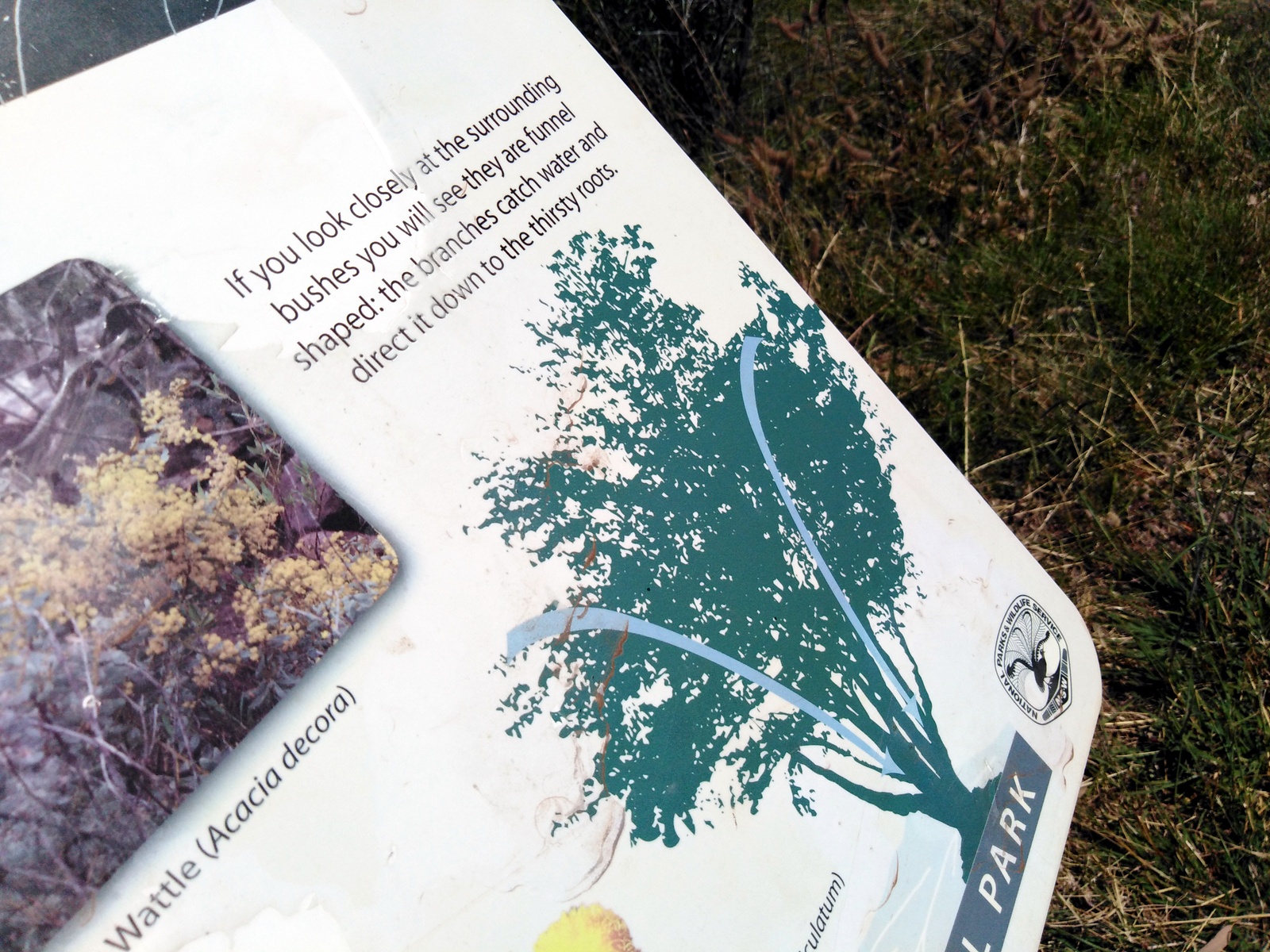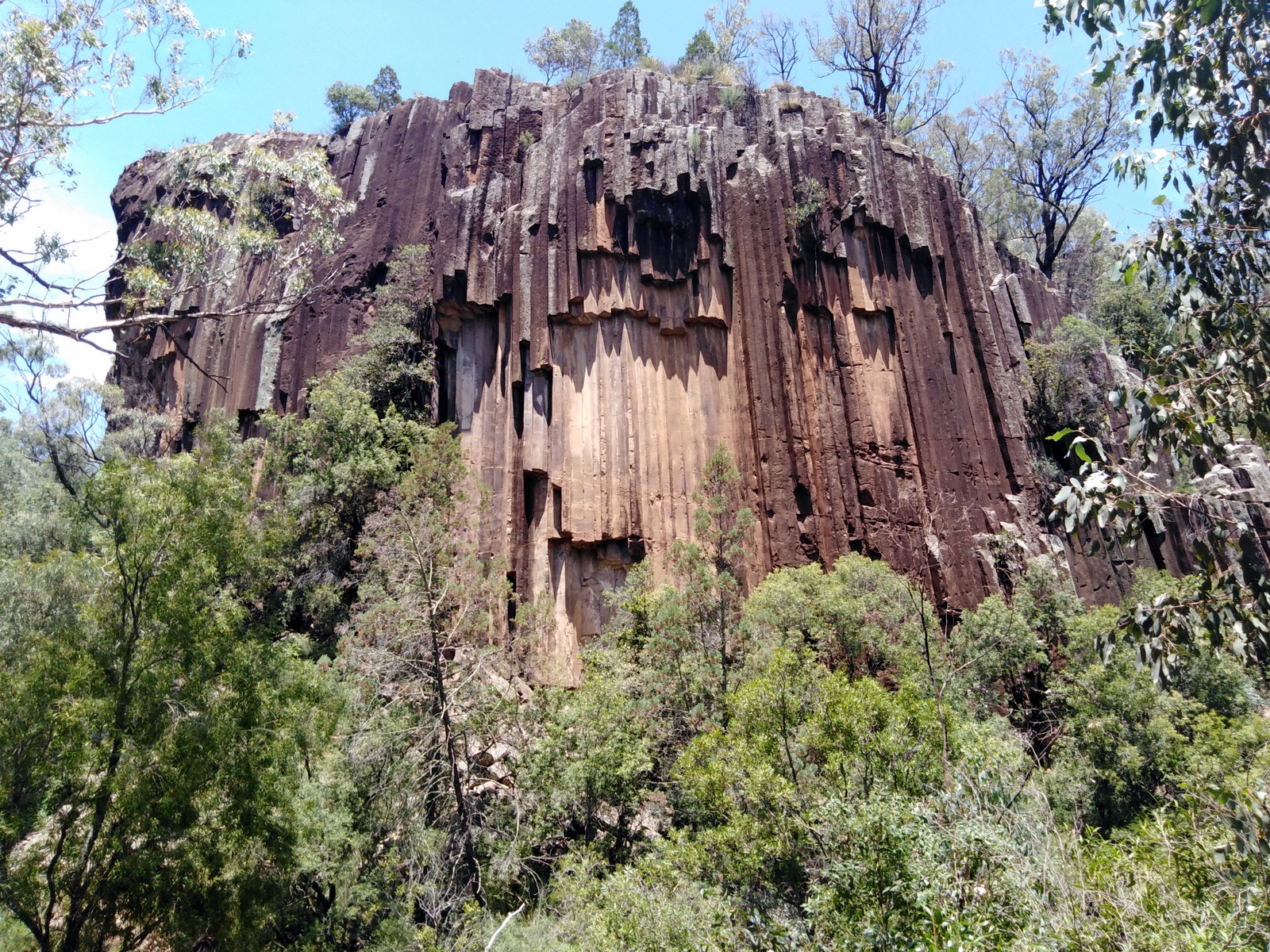
I was as pissed off as most people when Santos' coal seam gas project was approved in Narrabri, despite 98% of people opposing it. So I decided to spend a few days cycling the area in the north-west of New South Wales before it's possibly destroyed forever. Along the way, I met the activists who are fighting back.
Day 2: Narrabri to Deriah Aboriginal Area
6.50am There are big protest slogans against Santos as you leave town
As I set out for Deriah Aboriginal Area, I pass under the railway viaduct, where someone has spray-painted in big letters, "98% say no" and "No gas fields, protect our water." I'm hoping my breakfast of my Airbnb host's duck eggs will keep me going and that their fishy taste didn't mean there was something wrong with them. "Should a duck’s diet consist of fish and amphibians (like they would often eat in the wild) then the duck egg can taste fishy," says Heritage Farm in Victoria.
7.55am It's all uphill from here...
... and mostly dirt road. A route for trucks weighing more than eight tons bypasses this bridge by taking them straight through the river.
7.57am The rivers round here are either dry or 10 feet high
There has been rain to break the drought recently, resulting in a bumper wheat harvest, but this creek's still dusty. As the folk song "Queensland Drover" puts it: "I come from the Northern plains, where the girls and grass are scanty, where the creeks run dry or 10 foot high and its either drought or plenty."
9.51am The steep 4km climb pays off
My uphill, scrabbling battle over loose rocks leaves me famished, so it's lucky I brought food as well as water.
9.55am The artwork is unique
Large, coloured discs, illustrated by Gomeroi artist Steven Booby, are laid on the forest floor, along with plaques explaining each element of the Deriah logo: inward-facing horseshoe shapes for men; outward for women; circles for children; concentric circles for a meeting; easily recognisable bird shapes for the wagun, or brush turkey; and - lest anyone try to allege you merely cycled up a hill - arches for "mountains".
10am I should have taken a better photo of this map
This sign shows a large "private property" biting a rectangular chunk out of the Aboriginal area and cutting off access roads. But it also shows Biruu gaba lookout, if you get right up close to it.
11am I cannot find Biruu gaba lookout
Many of the Aboriginal areas around Narrabri are not signposted and all appear to be free of graffiti, in contrast to the well-signposted and vandalised areas around Sydney. I wonder if the lack of a signpost for the Biruu gaba lookout, along with its sculptures, is deliberate. Instead, after another 4km climb further up the mountain, my path is cut off by the private property. The owner has given it the same name as the Aboriginal area, "Deriah". "The exact origin of the name ‘Deriah’ is unknown," says the NSW National Parks and Wildlife Service, "although it may have come from the Gamilaraay word ‘dhiriya’, meaning ‘old’." It's unclear how old this private property is, but the sign looks new.
12pm This Queensland family cannot find the lookout either
A young family with the unmissable car sticker "Nindifuckingully Pub" are fruitlessly marching around the rocky valley in the scorching sun, as the father asks: "Remember what it said on the sign back there?" Their four-year-old's loud voice bounces off the valley walls.
12.05pm But this giant brush turkey nest is a good compromise
This huge artwork is on the sculpture trail next to the Wagun picnic area. Sadly, in 2017, someone shot at one of the sculptures.
12.07pm The wagtail bird was created by a mischievous kangaroo
At the picnic area, this Gomeroi creation story explains how a grey kangaroo, or Bandarra, tricked a man into climbing a high tree, from where he dropped into the river, ripping his chest open and turning him into the white-breasted wagtail, or Dhirridhirri.
2pm The wagtail's revenge
When you're cycling country roads in summer, the rich, sweet smell of rotting kangaroo always hits your nostrils before the crumpled carcass hits your vision. When I see this one, I look at it in a different way, wondering whether any wagtails have feasted on the insects that buzz around the decaying flesh.
3pm The tarmac is melting in the street outside Santos' Narrabri office
Evidence of the broiling climate, as I roll back through town, is right on Santos' doorstep. The office is closed and a sign directs media inquiries to "Santos Media Unit, James Murphy".
7pm My Airbnb host has given me some eggs and zucchini
That's breakfast sorted.
Day 3: Narrabri to Sawn Rocks
8.40am Climate change can mean big business
On the road out to Sawn Rocks, a volcanic formation that has left a cliff face that resembles organ pipes, the hot wind hurls tumbleweeds across the road and slows me to a 10km/h crawl, like I'm cycling through treacle. Through squinting, stinging eyes, I spot these fields testing drought-resistant chickpeas.
11am The road to Sawn Rocks is long and hot (if you're on a bike and it's 41C)
The temperature in Narrabri is consistently about 10 degrees hotter than Sydney for the duration of my stay. Sweat is running down my arms and into my cycling gloves. As I roll past Killarney State Conservation Area, the falling pitch of birdsong and thrashing hum of cicadas drowns out the death metal that's blasting through my headphones.
11.53am My bottle of water has gone from frozen solid to completely melted
I arrive at Sawn Rocks picnic area to find the solid ice I packed to keep my body temperature down has turned to liquid.
12pm The kindness of strangers (who think you're insane)
As I eat my lunch a couple in their sixties are walking back from Sawn Rocks. "How's the cycling going?" asks the man, his silver beard glinting in the beating sun. "Have you lost your licence? When we passed you in the car I said, 'There goes another fella who's lost his licence.'" He laughs. I look at him and say: "No, I've still got my licence. I've just lost my mind." Then I laugh a little longer than is comfortable, just to emphasise the point. There's an awkward silence. "Well, we'd better push on," says the man. A few minutes later, an elderly couple from Wollongong hand me a two-litre bottle of water, "so you don't evaporate in a pool by the side of the road", they say, genially.
12.40pm The hot walk to the rocks is lined with thirsty trees
A sign explains their water-catching funnel shape.
12.49pm Despite the heat, Sawn Rocks is busy
A group of travelling friends "originally from China and Hong Kong", but who live in Wollongong, look at my sweat-drenched attire and say: "Oh you're riding a bike? It's too hot today!" A sign explains that there were at least three Aboriginal camps here when white people arrived, but no Aboriginal name is given for Sawn Rocks. The towering formation pulses majestically and seems to bend with the light, threatening to collapse inward as the heat climbs ever higher. When I eventually get back to my Airbnb, my host tells me Narrabri is an expensive town. "Property is expensive, not just hotel rooms," he says. "When the gas project was approved, lots of houses suddenly sold and prices went up, plus a lot more came on the market."
Read Part 3 here.
Comments? Criticisms? Corrections? Email criticalfilms@gmail.com
ABOUT THE AUTHOR: Mat Ward has been writing for Green Left since 2009. He also wrote the book Real Talk: Aboriginal Rappers Talk About Their Music And Country and makes political music.
